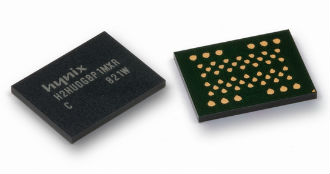 Prices of NAND and DRAM memory are going up as a result of an apparent shortage. Supplies of NAND modules seem to be particularly hard hit because of strong demand for SSDs, tablets and smartphones.
Prices of NAND and DRAM memory are going up as a result of an apparent shortage. Supplies of NAND modules seem to be particularly hard hit because of strong demand for SSDs, tablets and smartphones.
Tag: intel
Intel may ditch netbookish Atom brand
 Intel may be about to ditch the Atom brand after five years on the market. The company told CNET that its next generation Silvermont chips will be use the Pentium and Celeron brand, and it has an explanation for the move, sort of.
Intel may be about to ditch the Atom brand after five years on the market. The company told CNET that its next generation Silvermont chips will be use the Pentium and Celeron brand, and it has an explanation for the move, sort of.
Asian tablets will win the day
 As I was having a mango and orange juice round the corner from the somewhat unique hotel I’m staying in here in Old Taipei, I had an invitation from Sascha Pallenberg, I popped round to pay a visit to Mobile Geeks, and it was something of an eye opener.
As I was having a mango and orange juice round the corner from the somewhat unique hotel I’m staying in here in Old Taipei, I had an invitation from Sascha Pallenberg, I popped round to pay a visit to Mobile Geeks, and it was something of an eye opener.
Sascha, and fellow reporter Nicole Scott, have offices in rather a swanky building on the 11th floor of an office block near the metro. Obviously they are gearing up for next week’s Computex but we had time for a chat about the state of the tablet market.
Sascha showed me two tables – one Chinese one sells for $35, while the other, a well built machine from Ramos, sells for $225. Both are Android devices and Sascha tells me there are dozens, maybe hundreds of these babies manufactured in China, which obviously has implications for the big boys, the Taiwanese boys and, well, the whole world. Heck, you could bundle a $35 notebook with a carton of cigarettes, I suggested.
Can you obtain these machines in the USA and Europe? Well, you can certainly get hold of the Ramos machine – check out its site here. But most of the tablets, Sascha suggested, were destined for the Asian, Indian and African markets, where no one can lash out the amounts of cash Apple and others expect.
The real question for me is how vendors can possibly expect people to pay vast sums of money in the USA and Europe when it’s obviously not hard for the Chinese to master manufacturing and with a bill of materials at a considerably less cost. Surely it can only be a matter of time before the majors are forced to slash prices to match the Chinese offerings – and then it will be a case of just how they can make such big margins as they do now, in the future.
And with the heady mix of Windows tablets, Android tablets battling it out, where exactly is this going to leave the old guard – Microsoft and Intel?
Disties offer gourmet delights
 Computex 2013 begins next week – a jamboree where there’s a chance to meet a plethora of industry types from all over the world and those at the heart of the supply chain.
Computex 2013 begins next week – a jamboree where there’s a chance to meet a plethora of industry types from all over the world and those at the heart of the supply chain.
We’ll be covering all the important announcements on both ChannelEye and our brother pub TechEye.net.
And here we’ll be bringing you all the gossip and yak yak we hear on the grapevine and on the Nangang strasse.
Let’s start with a juicy story that demonstrates how business is done differently in Asia than in Europe. Well, we think UK vendors [what vendors, Ed?] wouldn’t find themselves in an analogous situation. A well known vendor from Old Taipei found himself being entertained in the Philippines recently, with lashings of very strong beer and a delicious goulash like soup. At the end of the evening, the vendor asked his hosts about the delicious stew – to be told that they’d been supping speciality dish horse penis soup.
All the main news buzz over here is about aggressive acts by the Philippines against a Taiwanese boat recently. That led, we hear, to a Canadian woman being unceremoniously ejected from one of the famous Taipei cabs because the driver thought she was a Filipino.
You might remember the other week that several HTC suits in America were beamed out of the company – prompting speculation that there was something afoot in the beleagured Taiwanese company. It turns out many of the suits were ex-employees at the Redmond Volehill and, strangely enough, the Microsoft culture didn’t fit with the HTC culture. Once, of course, Microsoft and HTC were very pally indeed, introducing a smartphone superficially very similar to a really pioneering smartphone from a British company that ended up successfully suing Microsoft.
Meanwhile, some folks are very enthusiastic about Intel’s announcements next week of its Haswell technology. Bitter and twisted hacks over at sis pub TechEye believe the chip giant isn’t going to do Haswell as people expected. That, of course, remains to be seen but expect that Intel’s new CEO, already dubbed “Special K” and who was speedy to institute a purge of positions at Chipzilla, will be watching its progress with some degree of trepidation. So will we, Mr K, so will we.
More – and there will be much more – later.
* If you’re new to Computex and to Taiwan, check out this site – We View Taiwan – for some really useful information.
Chip revenues down
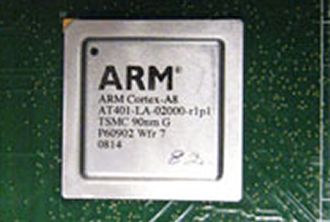 Revenues for the global semiconductor market dropped two percent year on year to $295 billion in 2012, IDC’s latest semiconductor application forecast reports.
Revenues for the global semiconductor market dropped two percent year on year to $295 billion in 2012, IDC’s latest semiconductor application forecast reports.
Consumer spending slumped in the second half of the year which had a significant impact, but this was also combined with a slowing down in industrial and other market segments too. Europe’s economic crisis leaned on the PC market and China, too, was not spending as much as had been hoped. IDC notes the “lackluster” Windows 8 launch did not prove to be the boon for PC sales manufacturers were praying for.
Cheaper Chinese suppliers pressured average selling prices and dragged down overall revenues.
Just 17 companies with revenues of a billion or more, of the 120 that IDC tracks, managed growth of over five percent for 2012. Most saw declining revenues, including the majority in the top ten. Qualcomm, Broadcom, NXP, Nvidia, MediaTek, Apple and Sharp were the few in the 25 largest companies that registered positive growth.
Intel, IDC points out, saw revenues plunge $50 billion for the year, a drop of three percent, attributed mainly to weak PC demand and failing to make significant inroads into the tablet and smartphones market. Samsung saw revenues fall six percent. Texas Instruments , at number four, saw a decline of six percent.
Qualcomm, however, was a winner – ranking third in 2012 and growing revenues 34 percent to reach $13.2 billion. IDC states that this is largely due to Snapdragon and its prevalance in modem technology.
Altogether, the top ten vendors – including Broadcom, Renesas, Hynix, STMicro and Micron, held 52 percent of global semiconductor revenues, seeing a three percent decline compared to the previous year. The top 25 companies overall declined three percent, bringing in revenue of $206 billion.
Semiconductor device types were a mixed bag. Fastest growing were sensors and actuators, but these made up just two percent of overall revenues. ASSPs represented 32 percent of overall revenues and grow four percent thanks to media, graphics, and application processors, as well as RF and mixed signal ASSPs. Optoelectronics made up six percent of the revenues, growing five person on the back of image sensors and LEDs. Microcomponents declined five percent, while memory declined ten percent, holding 17 percent of all industry revenues. Analogue declined by seven percent to account for seven percent of all revenues.
IDC’s semiconductors research manager Michael J Palma said in a statement that the challenge is to “zero in on their key value propositions”.
“Whether that is in modem or connectivity technologies, sensors, mixed-signal processing or power management, there are areas of the market showing strong potential,” Palma said. “However, competing in crowded segments with little differentiation has contributed to the slowdown in semiconductor revenues”.
Dell says small is beautiful
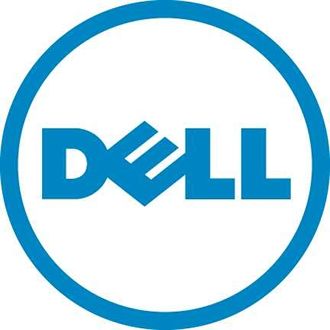 Hardware company Dell has introduced two server products that it claims are best of class.
Hardware company Dell has introduced two server products that it claims are best of class.
It has introduced the Precision T1700 tower workstation which it is says is the smallest and lightest compared to the competition. The Intel based machines come with Nvidia or AMD graphics and has PCI x16 Gen 3 slots. The T1700 SFF (small form factor) also has two front USB 3.0 ports.
In addition, Dell announced upgrades to its rack family – the Precision R6710 is suitable for datacenters. It can support up to four single wide graphics card and can also support Nvidia Grid for virtualized graphics.
The R760 has 16DIMM slots, a 6GB/s LSI2308 SATA/SAS controller and uses dual Intel E5-2687W 160 watt eight core processors.
The R7610 workstation starts at $2,179, but Dell has still to price up the two T1700 workstations, available from June 4.
Haswell notebooks head to retail channel
 Manufacturers are hoping that a new crop of notebooks based on Intel’s Haswell processors and Windows 8 can help them buck negative trends in the PC market. A torrent of announcements is expected at Taipei’s Computex next month and the first designs are ready and shipping.
Manufacturers are hoping that a new crop of notebooks based on Intel’s Haswell processors and Windows 8 can help them buck negative trends in the PC market. A torrent of announcements is expected at Taipei’s Computex next month and the first designs are ready and shipping.
The first Haswell-based notebooks have already shipped and they are expected to arrive in retail channels by the end of the month, which means we shouldn’t see many paper launches at Computex.
However, most vendors are playing it safe and they don’t appear to be placing huge orders. With the PC market contracting by double digits, one can hardly blame them for such caution. As a result, ODMs are expected to see little growth in May, but if vendors regain their confidence they could place more substantial orders in June and beyond. Digitimes reports that Quanta, Compal and Wistron all saw their shipments decline by 10 to 20 percent in April.
Intel is trying to rekindle interest in notebooks by issuing new design guidelines and trying to keep prices down. This is especially true of Ultrabooks, which failed to catch on due to their relatively high prices.
Intel is hoping to shave off a couple of hundred dollars from Ultrabook manufacturer suggested retail prices by the end of the year. In addition to new Haswell chips, a growing number of vendors are choosing to integrate touchscreens in their next-gen Ultrabooks.
It’s not just Intel’s skin on the line, either.
Microsoft is already taking a lot of flak over lacklustre Windows 8 sales, Nvidia is hoping to grow its discrete GPU market share on Haswell notebooks, Seagate and Western Digital have both rolled out Ultrabook friendly 5mm hard drives and hybrid drives and the list goes on.
With so much at stake, plenty of big players have a vested interest in helping Intel’s Haswell push, which offers some hope of good news for consumers as it should translate into better value for money.
Windows 8 gear set to get cheaper
 The PC market is in the middle of its worst slump ever, but there might be some light at the end of the tunnel. PC makers believe prices of Windows 8 devices will fall dramatically in the not so distant future.
The PC market is in the middle of its worst slump ever, but there might be some light at the end of the tunnel. PC makers believe prices of Windows 8 devices will fall dramatically in the not so distant future.
On Wednesday Acer President Jim Wong said Microsoft is becoming increasingly considerate to its hardware partners and that it is finally starting to listen to their suggestions and ideas. Shifting the focus to cheaper products seems to have been the loudest suggestion. Wong also pointed out that touch enabled devices will open up a lot of possibilities for PCs, but he also warned that many simply don’t need touchscreens on their trusty PCs.
On the other hand, more touchscreens and mouth-watering price points could spell more competition in the cutthroat tablet market, dominated by Apple and Android gear. A number of manufacturers are already working on smaller Windows 8 tablets as well. The success of the iPad mini and even cheaper 7-inch ARMdroids did not go unnoticed, but it will take some effort to make Windows 8 truly competitive in this market, which is already becoming overcrowded.
First of all, Windows 8 is a bloated operating system by tablet standards. This means Windows 8 tablet designs need a lot more storage than their iOS or Android counterparts, which tends to drive the price a bit higher. Windows 8.1, or Windows Blue, could try to tackle this shortcoming. Secondly, they need very efficient x86 chips to be economically feasible, but upcoming x86 SoC designs from Intel and AMD should go a long way towards addressing this issue. Finally, Redmond has to cut Windows 8 prices, plain and simple.
However, Asus CEO Jerry Shen warns that there is no quick fix for Microsoft’s tablet woes. Windows 8 tablets are quite a bit pricier than their Android counterparts and they cost at least $150 more. Shen believes the price gap could narrow to about $50 this year, which should considerably improve Microsoft’s competitiveness.
Acer Chairman J.T. Wang said Microsoft’s willingness to adapt to change is a good sign for the PC industry, reports the Wall Street Journal. He was rather blunt about it, too.
“In the past we consider they (Microsoft) live in heaven,” he said. “But now they go down to earth and they start to learn how people living on earth think.”
Although tablets are generating all the buzz lately, there are some changes on the PC front as well. An increasing number of all-in-ones and more powerful mini-PCs are hitting the market. Ultrabooks sales are still failing to impress, but there is some good news to report on the notebook front as well. Prices of Ivy Bridge notebooks are seeing double-digit cuts, as Intel partners gear up to introduce Haswell-based models over the next few months.
Ivy Bridge notebook prices slashed
 The UK market is following in Taiwan’s lead and slashing Ivy Bridge notebook and desktop prices in preparation for Intel’s Haswell launch, resellers have said.
The UK market is following in Taiwan’s lead and slashing Ivy Bridge notebook and desktop prices in preparation for Intel’s Haswell launch, resellers have said.
However, they have warned that in the current climate the company is doing itself no favours with the price reductions.
The comments come after a report in DigiTimes suggested that retail channels in the Taiwan market had begun to slash prices of Intel’s Ivy Bridge machines, which retail from $611, by an average of 10 percent. However, other models were reduced further with discounts between 20-30 percent.
And the orders from above have filtered down to the UK with resellers also feeling the pressure to slash.
“We’re getting orders for reductions too for the same reasons. But, this isn’t anything new, it’s the way the cycle works,” one reseller told ChannelEye.
“I’m not sure about the 20 to 30 percent reductions. At the moment we’re seeing five to 15 percent. But as the date of launch comes closer we’ll probably be forced to slash prices even more.”
However, others claimed the company wasn’t doing itself or the new launch any favours with the reductions.
“Whenever Intel is about to make a new release we see the old models, even if they haven’t been on the shelves for long, slashed in price,” another reseller added.
“While it works for us in terms of not carrying so much surplus stock, for companies it means they are losing potential customers and money with consumers and businesses now taking heed of these sales and waiting until these price cuts happen.
“Once the new products are launched the sales circle starts again.”
Another agreed, telling ChannelEye: “This is nothing new. It’s the way of retail life. But it’s not a good model to follow, especially in this climate where consumers are waiting to pounce on bargains and refusing to pay full price for anything.
“Maybe Intel should concentrate on getting existing lines right before making price cuts and new products that will no doubt be left sitting on the shelf.”
McAfee, Stonesoft merger bad news for channel
 Competition in the security market is increasing, meaning businesses and consumers could eventually end up paying higher prices to keep their PCs protected, resellers have warned.
Competition in the security market is increasing, meaning businesses and consumers could eventually end up paying higher prices to keep their PCs protected, resellers have warned.
The comments come as it was announced that Intel’s McAfee was splashing $389 million on the purchase of Stonesoft a security company that delivers software-based customer-driven cyber security products to secure information flow and simplify security management.
McAfee said Stonesoft’s product portfolio of next-generation firewalls would help it “extend its leadership position in network security.” It said it planned to integrate Stonesoft’s offerings with other McAfee products such as its cloud-based Global Threat Intelligence services.
However, resellers aren’t convinced the company is doing it to perfect the security world, claiming the buyout will stifle competition and keep customers “over barrels.”
“Intel and other big vendors are gobbling up smaller companies, closing the competition,” one told ChannelEye.
“This means that eventually we’ll be left offering clients only a few security software options at higher prices for the vendors but lower margins for us as we try and compensate for their greed.”
Another agreed, claiming companies were using the fact that everyone needed security to rake in the cash.
“The security world has gone mad. But then big security companies can afford to splash the cash. Not only do they charge extortionate amounts for security but have many over a barrel. It’s like car insurance,” he told ChannelEye.
“Everyone needs it to be safe but no one wants to pay the premiums for it.”
Others also pointed out that although it was a good time to be in security, resellers rarely benefited.
“It’s big money in the security software market if you’re at the top, as this proposed buyout has shown,” he said.
“However resellers like us rarely see the fruits of the profits. Our clients are often quite au fait with security and buy off the shelf, or won’t spend the money we require to see rewards.”
Cheap tablet onslaught to intensify
 Tablet makers are set to roll out the next generation of cheaper tablets over the coming weeks and it is now clear that competition in the cutthroat market will intensify in the second half of the year.
Tablet makers are set to roll out the next generation of cheaper tablets over the coming weeks and it is now clear that competition in the cutthroat market will intensify in the second half of the year.
Intel confirms $200 Android notebooks
 Intel is working on $200 notebook designs, powered by cheap chips and Google’s free Android operating system.
Intel is working on $200 notebook designs, powered by cheap chips and Google’s free Android operating system.
Dadi Perlmutter, Intel VP and chief product officer told CNET that $200 notebooks will predominantly be Android products based on Atom chips.
Now the ball is in Microsoft’s court, if Redmond wants to gain a toehold in the ultra cheap notebook market it will have to make its operating systems a bit cheaper.
Perlmutter said the price of Windows 8 gear depends on how Microsoft prices the OS, and it could end up slightly pricier. In addition, Perlmutter pointed out prices of notebooks based on Core processors should go down to $399 to $499.
As netbooks are about to die a quiet death, $200 droidbooks might be the best way to replace them. Upcoming Atom chips are roughly on a par with ARM SoCs in terms of power consumption and performance per watt, so from a technical standpoint Intel should have everything covered.
The big question is software. Android is a good operating system for touch enabled devices, but it has yet to prove itself on more traditional form factors, that is, notebooks.
HP talks up the unsinkable Itanium
 While many in the industry have been writing off HP lately, the maker of expensive printer ink says that it is about to make a comeback, but has made Itanium part of its cunning plan.
While many in the industry have been writing off HP lately, the maker of expensive printer ink says that it is about to make a comeback, but has made Itanium part of its cunning plan.
At the unveiling of Odyssey, a project ” to redefine the future of mission-critical computing”, HP said it wanted to transform the server market.
Senior Vice-President and General Manager, Business Critical Systems, HP, Martin Fink told All Africa that HP’s plan is more cunning than a distributed network of foxes wired up in a supercomputer of cunning.
HP has in its hands a roadmap which annex UNIX and x86 server architectures to bring industry-leading availability, increased performance, cure cancer and put everything in a single platform.
Fink said that these days organizations were challenged with increasingly tough service-level agreements and all sorts of terrible pressure to be efficient with their IT budgets.
HP reasons that in a perfect world they would have the availability and resilience of UNIX-based platforms along with the familiarity and cost-efficiency of x86.
So HP is coming up with a development roadmap includes ongoing innovations to HP Integrity servers, HP nonstop systems and the HP-UX and OpenVMS operating systems.
The roadmap also includes delivering blades with Intel Xeon processors for the HP Superdome 2 enclosure and the scalable c-Class blade enclosures , while fortifying Windows and Linux environments with innovations from HP-UX within the next two years, Fink said.
After HP released “DragonHawk,” its customers have been asking HP to expand the mission-critical experience that is delivered today with HP-UX on Integrity to an x86-based infrastructure.
He touted project Odyssey as something that HP partners would really want because it offered a “Intel’s continued innovation with a multigenerational Itanium processor roadmap”, combined with existing and future mission-critical capabilities of Intel Xeon processors, allow HP and Intel to provide customers with greater flexibility and choice.
Together with HP, he said that Intel would be able to give customers the ability to do mission-critical computing on their terms, with a broad range of operating systems and applications, he added with a straight face.
Microsoft cuts the price of Ultrabooks
 Software giant Microsoft has twigged that Intel’s dream of Ultrabooks is not proving that successful.
Software giant Microsoft has twigged that Intel’s dream of Ultrabooks is not proving that successful.
Redmond has been slashing the price of its Touch ultrabooks at the Microsoft Store with the Acer Aspire S7 losing about $300, falling to $1,299 from $1,649. .
There was nothing wrong with the Acer Aspire S7 and it was well reviewed, it is just that no one wants Ultrabooks as much as Intel told the world that they did and certainly not for $1,649.
Perhaps the key to the problem is still the spec. The $1,649 price tag strikes as a lot to pay for something with a 1.9GHz Intel Core i7-3517U processor. A laptop might be heavier but it does more and a lot faster.
CNet found another one discounted by Vole was the Sony’s Vaio T Series 13 has been reduced to $999 from $1,299 with its 2GHz Core i7-3537U processor that model is a little faster.
And the lower-end of Ultrabook land 0 the Vaio T Series has been cut to $799 from $899 and HP’s Pavilion TouchSmart Sleekbook is now $599, reduced from $699.
To be fair it is not just Intel’s Ultrabook dream which has seen some cost cutting. Microsoft has also been reducing the price on some of its tablets. Some are as cheap as $399.
AMD launches battle against Intel over APUs
 An interview with AMD last week shed light on the latest battleground between Intel and AMD which underlies future changes in computing. In a meeting with corporate vice president for global channel sales, Roy Taylor, he said both AMD and Intel are investing in microprocessor architectures which give equal prominence to both serial and parallel computing. And he claimed AMD is ahead of the game.
An interview with AMD last week shed light on the latest battleground between Intel and AMD which underlies future changes in computing. In a meeting with corporate vice president for global channel sales, Roy Taylor, he said both AMD and Intel are investing in microprocessor architectures which give equal prominence to both serial and parallel computing. And he claimed AMD is ahead of the game.
Using both the CPU as a serial processor and the GPU as a parallel or GPGPU (General Purpose GPU) processor these new devices form a category that AMD calls the APU. The APU will be the bedrock of a new generation of x86 based HSA or Heterogeneous System Architecture devices. Current generation APUs such as Sandy Bridge, Ivy Bridge and the forthcoming Haswell parts from Intel, and AMD’s Trinity and Richland parts from AMD still use separate memory configurations, with each processor having its own defined memory block.
But future devices in 2014, said Taylor, will use single memory configurations, allowing both the CPU and GPU to dynamically share a single memory array and be true HSA enabled processors. Intel’s introduction of an L4 cache to speed up the performance between its CPU and GPU is also an indication of its intentions.
In defense of his argument for APU as a new microprocessor category, Taylor showed a diagram that illustrated the increasing commitment by Intel to a larger GPU configuration in its APU generations. These indicated, he said, the need for successful HSA architectures to be balanced.

APUs and Open CL
The growth and success of Open CL, which is able to take advantage of APU devices by using the GPU to accelerate parallel functions, is further ammunition to the establishment of the category, said Taylor. Popular applications such as Handbrake for transcoding, and VLC Player for watching movies, take advantage of this open standard maintained by Khronos and supported by AMD, Apple, IBM, Intel and Nvidia. Open CL received a strong endorsement last week by the announcement by Adobe that it is using Open CL to hardware accelerate its Premier Pro product.
Since HTML5 also takes advantage of GPU acceleration it seems to make sense that in the future we will see APUs used wherever there is a need for a device which can replace the traditional but separate PC configuration of having a separate CPU and GPU. “That configuration makes sense for higher end systems’”, said Taylor. But in the meantime currently available APU performance is surprisingly strong, he said. To this end he went on to show the performance of AMD current APUs compared to Intel’s or configurations using both Intel and a separate Nvidia GPU together.
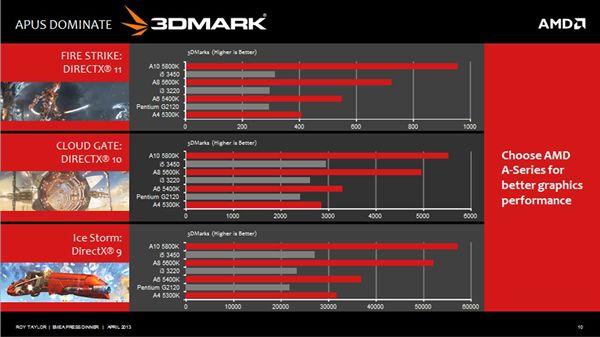
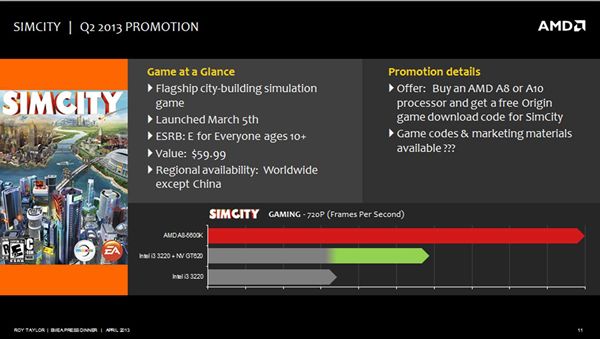
When asked what this meant for the channel, Taylor said that at a time of austerity, being able to build relatively high performance desktop and notebook computers at a fraction of their traditional prices could have a huge impact. He may be right but only if system builders and e-tailers recognise the value of the new category and get behind it.
A quick read of the HSA Foundation website seems to show a significant ground swell behind the use of balanced compute architectures. With companies like Qualcomm, ARM, Imagination Technologies and Samsung also investing in HSA it does seem that we can expect to see strong developments in this area. It will be interesting to see what Microsoft thinks of the use of APUs to power Windows and whether the software community in general gets behind the category too.
We contacted Intel in Santa Clara for comment but at the time of press had not received a response.





